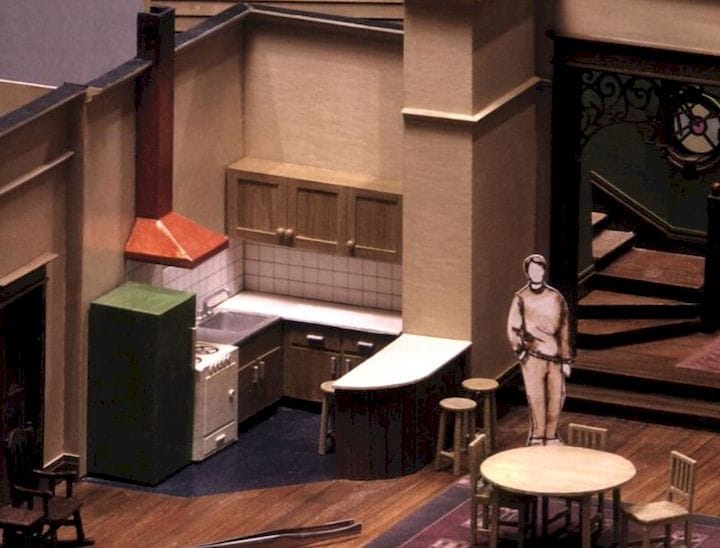![Model-Making for Set Designers [Source: Amazon]](https://fabbaloo.com/wp-content/uploads/2020/05/model-making-for-set-design_result_img_5eb098679badc.jpg)
This week’s selection is “The Handbook of Model-making for Set Designers” by Colin Winslow.
Set design is a mature discipline that’s been used around the world for over 100 years. It refers to the design of the background, foreground and contents of a stage, be it for TV, movies, theatre or even presentations.
The problem encountered by set designers is that they are often constrained by a fixed budget with which to somehow concoct an arrangement of items and structures that convey the intended theme or meaning of the event. It’s critical to get the design correct before actual construction begins, because there often isn’t a second chance, as time and budget expire.
Thus the set designer would made use of simulations, or models, which are miniature versions of the intended full design. The miniatures are far less costly to construct and can be used to validate a given design. It’s even possible to construct several variations using miniatures to select the best option on which to spend the majority of the budget.
3D printing is obviously a useful tool for such ventures, but it is a relatively new tool to the traditional practice of set design through models.
This book tells the story of how models are effectively made for set design. From the book’s description:
“From the most basic cutting and assembling methods to advanced painting, texturing, and finishing techniques, this invaluable guide covers every aspect of producing models for stage sets. Useful hints on producing a range of different models—including buildings and structures, organic elements such as trees and bushes, and furniture—are provided along with helpful illustrated step-by-step instructions. A number of modern computer-based design techniques are also included and accompanied by tips on using these techniques in combination with more traditional procedures to enhance finished products.”
It describes different types of sets, tools used to make models, techniques for doing so and the architectural techniques used in miniatures.
It also spends considerable pages on finishing aspects, such as painting and texturing, setting up loose items such as furniture, surface coverings, moving components, trees and even people! On a full size set, people simply walk through, but in a miniature you often must create a miniature person to illustrate the size of the elements.
My interest in this book is to join together the modern 3D printing tools with the traditional practice of making miniature models of set designs. These should be a very complementary set of tools, and those with 3D printing expertise might benefit from a full exposure to the traditional techniques.
In fact, any 3D printer enthusiast might benefit from the model making practices of set designers, even if the purpose of the miniature model is not for use as a set.
Via Amazon











This week’s selection is “3D Printing Projects” by Dorling Kindersley, a.k.a. “DK”.